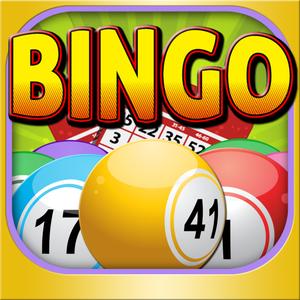Coverall Bingo Online
I've been tasked at work to analyze a new bingo game. I have a couple of questions regarding coverall/blackout bingo (all 24 numbers + 1 free space needs to be dabbed). I would appreciate it if anyone could confirm that the following statements are true.
1) the cumulative distribution function of number of calls needed for coverall/blackout (with only 1 bingo card in play) can be modeled by the probability mass function of the hypergeometric distribution (as it can in Keno).
2) for multiple distinct cards in play, say n, can we use the following formula: 1-(1-p)^n to model the cumulative distribution function of number of calls where p is the probability of a single card achieving coverall?
As for 2, the statement is contradictory to Wizard's website; please refer to the Multi-Player Bingo section (https://wizardofodds.com/games/bingo/probabilities/2/). I agree with Wizard that the formula does not hold when you try to model anything other than coverall/blackout. However, I believe the formula is valid when we are modeling coverall/blackout game. I'd be curious to hear if anyone agrees with me.
The Free Bingo Hall Play free multiplayer bingo by clicking the image below. You can chat with other players in the game. The Internet bingo game provided here offers free no deposit bingo only. Reverse Coveralls Special Coverall Bingo. Add some coverall bingo excitement to your day play for fabulous cash prizes every Saturday between 9:00PM EST and 10:00PM EST in the seasonal bingo room playing our $50.00 Reverse Coverall $500.00 specials. These fun filled $50.00 Reverse Coverall $500.00 games bring a great twist to the bingo fun. Starting with a guaranteed minimum cash prize of $50.
Administrator
Free Coverall Bingo Online
The main objective of coverall bingo is to cover the entire bingo card, hence its name, and all the numbers (5 x 5) need to be completed before bingo can be called. The game is played extensively at land based, as well as online bingo rooms on the internet. In order to win a coverall bingo game, you have to complete all 25 spots on your bingo card. Blackout bingo, or coverall bingo, is a type of pattern bingo most common online, although it is sometimes played in live bingo halls as well. Blackout bingo can be played either using the 75-ball, 80-ball or 90-ball system, and the object of the game is to cover all spots on your bingo.
So you have to split the calculation into two parts. Let's say you want the probability of a coverall in X calls (or less) when Y cards are in play:
1) Identify (iterate through) every possible distribution of X calls. For example, with 50 calls, there are 20,176 possible distributions (including distributions where a coverall is not possible). Determine the probability of each distribution.
Then, for each distribution:
2) Determine the probability of achieving a coverall given the current distribution. This will of course be zero when there are fewer than 4 Ns or 5 Bs/Is/Gs/Os.
3) Apply the 1-((1-p)Y) formula here with p = the result of #2 and Y = the number of cards in play.
4) Multiply the result of #3 by the distribution probability of #1, and accumulate (sum) these results for each distribution to determine the overall probability of a bingo within X calls or less for Y cards.
For example, for a coverall in 50 calls, here are the true probabilities (vs. the HGD estimates) for a few card quantities:
1 card = 0.0000047150811362 (vs. the HGD estimate of 0.0000047150811337)
100 cards = 0.00047138 (vs. the HGD estimate of 0.00047140)
500 cards = 0.00235428 (vs. the HGD estimate of 0.00235477)
1000 cards = 0.00470206 (vs. the HGD estimate of 0.00470399)
5000 cards = 0.02325221 (vs. the HGD estimate of 0.02329973)
The above calculations assume the following:
- standard North American bingo cards are used (5 Bs, 5 Is, 4 Ns, 5 Gs, 5 Os)
- the cards in play are random
- the numbers are drawn randomly
Administrator
 The easiest way to do multi-card bingo math is by random simulation. I know it isn't as elegant as a closed forum answer, but sometimes the easiest way is ... the easiest way.
The easiest way to do multi-card bingo math is by random simulation. I know it isn't as elegant as a closed forum answer, but sometimes the easiest way is ... the easiest way.Odds Of Winning Bingo Coverall

Thank you for your responses. Indeed, I had not considered the fact that there could be instances where only 4 B's have been called in a given number of calls and there is no coverall bingo possible. I understand now why the cards are correlated.
One of the variants of the new game we are contemplating does not have the column restrictions, i.e. any numbers between 1 and 75 can go anywhere in the 5x5 matrix. I believe HGD works for this game as it is really Keno but in Bingo format.
Cheers,